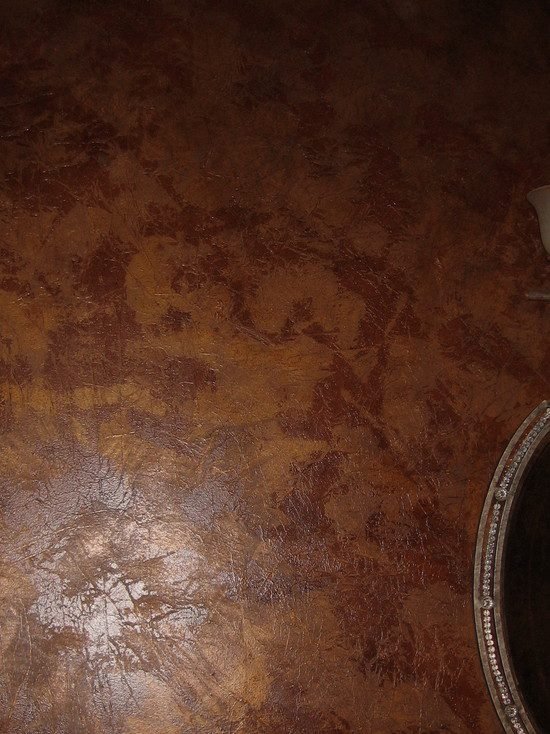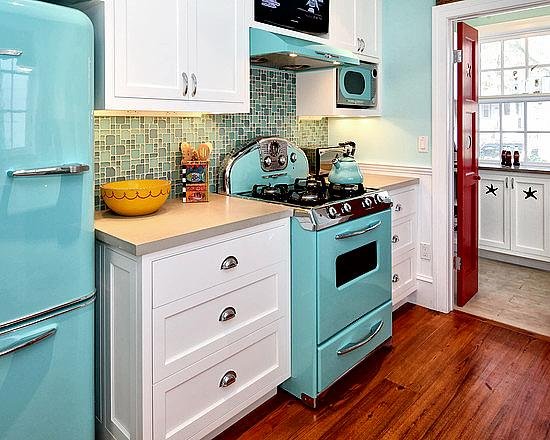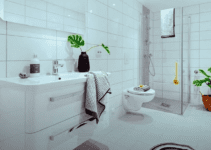Drive away the monotony and give the room personality by applying waterproof paint in several color tones.
If you are bored of old paint in one color tone, try paintings with decorative effects that can be obtained either from the technique of painting or using special paints that provide a textured look.
Before opting for this type of decoration, you should keep in mind that it is enough to paint one wall or just an area, which you want to highlight in the overall look of a room. In any case, it is not recommended to apply this type of paint on all walls of the room. This would only overburdening the space, giving a feeling of suffocation.
Painting with Textured Paint
There are interior paints on the market that offer a wide range of decorative effects. They are used like any ordinary paint by brush, roller or sponge application. The obtained painting can be customized through a technique that depends largely of your own inspiration and imagination.
Such paints are different from the regular ones through a higher density and a higher consumption per square foot.
However, by using textured paints you can get very interesting decorative effects resulting from the combination of a textured base (ready to use) and the application of one or two contrasting colors. These two contrasting colors are applied by brush, natural sponge or a simple sponge bath.
Using a Bath Sponge
Depending on your preference, the freshly painted wall can be washed with a slightly damp bath sponge so as to get a patina look. Such type of painting combines decorative relief appearance to that caused by color combination.
Using a Special Roller or Natural Sponge
Roller: A simple technique, which does not require much experience, consists of applying the textured paint with a roller, specifically designed to obtain decorative effects. You can buy special rolls with ribbons of leather that offers depending on their length, a wide variety of decorative effects or role of natural fibers that mimic the effects of a leopard skin, waves, butterflies etc
Natural Sponge: A third method of obtaining a decorative painting consists in painting the entire wall with white paint (or you can choose a different background color). Then soak a wide brush in the coloured paint and also load with paint a natural sponge. However, the sponge should no be too loaded for the application because the paint will flow down the wall.
Dab the wall with the sponge from the center to the edges. You can choose the model density depending on how often apply the sponge. In order, do not load the pattern, it is recommended not to return with a new dab the area that is already decorated.
You can achieve a beautiful wall decoration using not one but two shades of paint on a white surface. It is important to avoid choosing shades like the furniture to avoid loading, the appearance of the room.
However, regardless of paint and technique chosen, it is absolutely necessary that before applying the wall surface to be cleaned of impurities (possibly wiped with a damp sponge) to be degreased and perfectly uniform.
How to Apply Textured Paint
Applying a textured interior paint requires no special skills. Anyone who has some skill can apply the paint. However, it is important, with walls that show cracks or other irregularities, to make necessary repairs before and apply a coat of primer.
Most manufacturers offer a set of two products: a background layer (opaque, matte white) and a layer effect (colorful, but that let to be seen the background layer).
Drying background layer is complete after 8-12 hours and then colored layer can be applied by brush, fur glove or sponge. After 5-10 minutes, when the product begins to dry, you can use a plastic spatula over film to create a continuous and harmonious decorative effect.
It is important to know that textured paint cannot be diluted and can be applied at temperatures between 41 and 95 degrees Fahrenheit (5 and 35 degrees Celsius).
Venetian Stucco – A Decorative Painting Type (howtobuildahouseblog.com)



